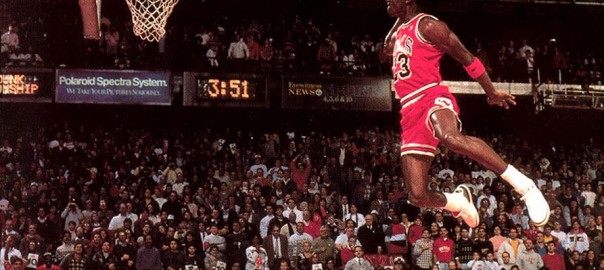What do wearing two pairs of basketball shorts, bringing shower sandals to a tennis court, and eating chicken before a game have in common? Aside from being odd, these quirks are related to the massive success of the athletes who performed them. Well, some may call it quirks – but experts believe this automated behavior allows the brain to predetermine (and hopefully manifest) a desired outcome. The real question is, do you have to be legendary to unleash this awesome association with success, or can you apply it to daily life in the office?

Without a doubt, ritual can improve performance and morale in anyone’s life. You don’t have to be an athlete and it doesn’t even have to be quirky. Developing rituals is a common cultural practice. From Olympians to average citizens, people look for opportunities to associate items or situations with “luck” or value.
Associating performance through a certain ritual is an effective way to focus the mind on an upcoming task, whether it’s a championship or a 5 o’clock deadline. According to Gloria B. Solomon, Psychology Consultant for California State University, you can perform consistently through the power of routine.
Ritual vs. Routine
Before going further, let’s clarify an important difference. To stick with the sports analogy, training at a certain time each day is a routine. Praying to your hockey stick or taping it a certain direction are rituals. This difference is important because routine is all about preparation or tangible results. In fact, an office environment is already rife with routine, such as morning meetings, lunches, set schedules, or casual Fridays.
Of course, that does not discredit rituals – in fact, they are surprisingly commonplace and often sensible. These behaviors are about switching “mental gears” to make sure you are ready for a specific conquest you are about to undertake.
How It Works
It works because the brain is a powerful, susceptible organ. The Harvard Business Review (HBR) credits the value of ritual to four areas: it creates a shared identity; it extends into personal networks or connections; it stimulates emotion and reduces anxiety, and it reinforces desired behaviors. Even if you just skimmed these sub-headers, you could imagine the value this can bring to an organization.
While these tenets were gaged based on team performance, they can also work on an individual level. The next question is, how can these capabilities be applied to drive personal performance? And how can they improve overall results in the office?
Take Advantage of the Capability You Already Have
First, let’s discuss how to unlock the power of ritual on a personal level. Some ideas for forming a ritual include:
- Keep it simple. It can be as basic as putting headphones on while you work, logging hours in a certain book, or clocking in at a specific time every day (to the minute). Work on certain documents with a certain pen, or try color coding to your heart’s content.
- Keep it ultra-specific. If simplicity seems a little plain, try associating specific behaviors with specific outcomes. For example, tie your shoes in specific way or button your shirt in a calculated order. Every time you go in to discuss a deal or give an interview, enter the room the same way.
- Try a familiar artifact. Associate a personal item with a desired outcome. You see this often with religious tokens, such as rubbing Buddha’s belly for luck. Whatever you choose, this ritual can be associated with a time when performance is key, such as renegotiations or public speaking. Another option is to incorporate an item from a previous position or experience. Associating the idea of “luck” or past value can help you get in the right mental mindset for what’s coming up.
- Look for naturally occurring incidents. If you had pasta for lunch and signed the dotted line on a major new deal that day, then eat pasta for lunch the next time the cards are back on the table.
Incorporating Ritual in the Workplace

The idea of ritual also allows for plenty of creative opportunity when it comes to team environments. Let’s look at the areas mentioned by the HBR and how they might be applied to your workplace:
- Creating a shared identity. This is often seen in the form of an “initiation,” whether a formal event or even a practical joke. Not only will this help new team members feel on-boarded, but you can count on your experienced workers feeling sentimental, too.
- Building on personal connections. These rituals can take the form of family gatherings or events with stakeholders or partners. In the same way initiations create shared identities within a team, hosting these VIP events can put names, faces, and value to workers’ personal lives, as well as familial value to your company through the eyes of an investor. It can also make these groups feel included beyond a purely business level.
- Stimulating emotion and reducing anxiety. Get everyone together on an inside joke. Whenever everyone is gearing up for a high-stakes deal and tension is mounting, rely on a ritual like singing out loud, cursing (if appropriate), or other light-hearted behaviors. This tactic will cut through the anxiety and remind everyone it will be okay.
- Reinforcing desired behaviors. Don’t simply incentivize. Instead, look for unique opportunities to encourage participation or improve performance. Associate an artifact with good behavior, or remind everyone that committing a bad behavior (but nothing too serious or ostracizing) means you have to wear a certain humorous tie.
Whichever methods you decide to incorporate, be consistent and listen to your workforce for any relevant opportunities to start a new tradition.
(199)
Report Post


